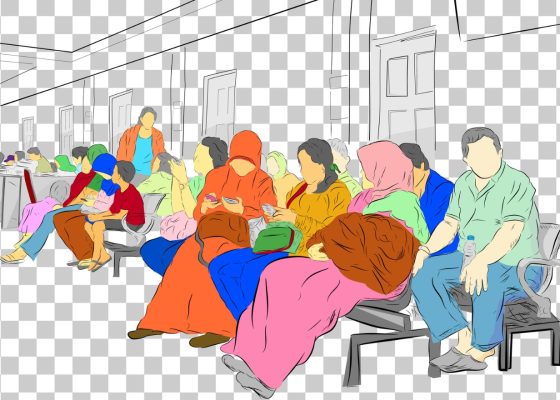That’s literally the title of a new qualitative study describing patient flow in the Queensland healthcare system.
A new study, published in BMC Health Services Research, has described patient flow through Queensland’s public hospitals as “a banana in the tailpipe”.
The University of Queensland study conducted four focus group discussions involving 23 healthcare workers and a selection of patients. They examined the factors hindering patient flow and what are considered critically necessary for systemic improvements.
According to Director, Queensland Digital Health Centre and an author of the paper, Professor Clair Sullivan, it showed that patient flow in a hospital needs to be rethought.
“For many decades we have been focused on the ‘intake’ of the hospital system: the emergency department. Significant clinical re-design efforts over decades has optimised this intake to be as efficient as possible.
“However, there is little data available on the “output” of the hospital system: the discharge processes to home and residential aged care facilities,” she told HSD.
The challenges were categorised into population (patients and providers), capacity, and process.
Population challenges included community-based care, staffing issues, and inequities in access.
The authors highlighted issues including peak demand on weekend and winter in community-based care, using emergency services inappropriately because of low health literacy and issues accessing social services in regional areas.
“So we need, so there’s so much criteria on discharge that sometimes we keep them in just another day, cause we can’t access a physio, we can’t access, you know, a dietitian… holds up a bed day for us, and as a consequence, we have they’re blocked down in the ED,” one research participant highlighted.
Staffing issues were also a problem with salary gaps and recruitments struggles mentioned.
“A declining interest in emergency medicine careers post-COVID-19 worsened the shortage of qualified professionals,” the authors wrote.
Related
Capacity challenges involved inefficient resource allocation, resource constraints, and patient volume growth.
Limited inpatient bed availability was highlighted as a critical issue which was exacerbated by ageing infrastructure.
“I’m going to say inpatient bed availability. So I know our hospital in … is probably 30 plus years old and we have not had an increase in bed stock in that time,” one participant said.
This is particularly exacerbated by growing patient volumes and changing demographics, particularly for aged care beds.
“… And then all of the hoops that they’ve got to jump through to be able to access an aged care bed. So those, once they reach ED, they are then in that hospital for quite a period of time,” one participant said.
Process challenges included bed management, modernisation struggles, private hospital issues, funding model problems, information sharing gaps, coordination challenges, transition issues, particularly delayed discharges from inpatient wards, and problems in healthcare management and patient communication.
Participants highlighted that the five day healthcare model was outdated and that more needed to be done to change structural problems in the healthcare system’s funding model.
“Which is like … was describing before we’ve got these outdated and anachronistic health system models and funding models that are set up for acute care, not for complex chronic disease care, which is what we have. That is the reality that we deal with now,” one participant said.
The study also looked at solutions which focused on human factors, infrastructure, and management, organisation, and policy.
A seven-day healthcare system was flagged, as well as a suggestion of using offload paramedics in hospitals to improve patient flow.
“They could help with tasks such as blood draws and patient movement, speeding up procedures and transitions in the emergency department,” the authors wrote.
They also highlighted that patients needing RACF beds should be identified earlier and there should be other intermediate care solutions so people can have a swifter transition to maintenance care.
The findings show how that a complex systems approach is needed, from the ED to community care.
As Professor Sullivan said, they now need to focus on the output of hospital systems, “to ensure we measure our discharges comprehensively, have clear accountability for the metrics across the different funding bodies. It is critical we keep consumers at the heart of everything we do,” she said.




